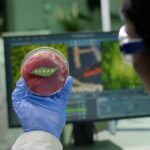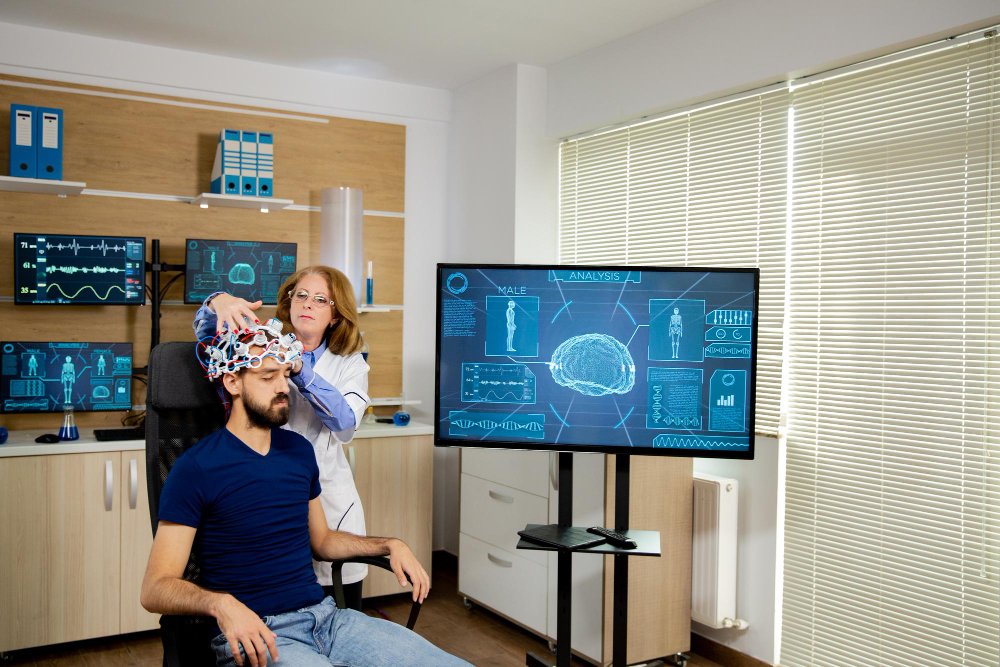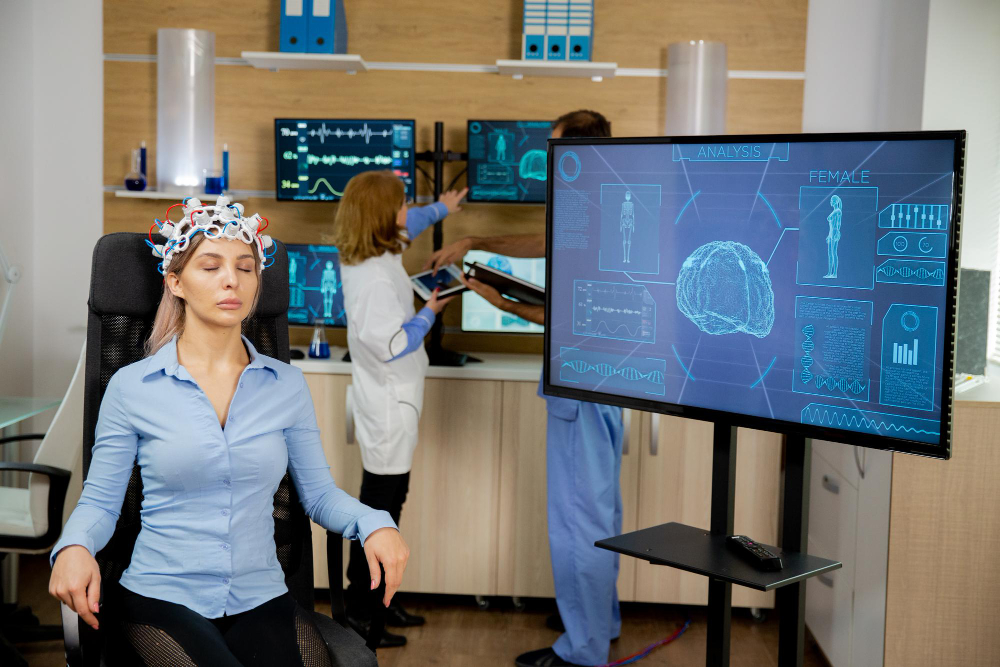How Nanotechnology Is Powering the Future of Medicine
In the last two decades, nanotechnology has evolved from a futuristic idea to a driving force behind medical innovation. By manipulating materials at the scale of atoms and molecules, scientists are now able to diagnose diseases earlier, deliver drugs more precisely, and even repair damaged cells from within.
This transformation is redefining how we prevent, detect, and treat illness — ushering in a new era called nanomedicine.
Let’s explore how nanotechnology is powering the future of medicine and why it’s becoming one of the most promising scientific frontiers of the 21st century.
What Is Nanotechnology in Medicine?
Nanotechnology is the science of designing and using materials at the nanoscale — typically between 1 and 100 nanometers (a nanometer is one-billionth of a meter).
At this scale, materials behave differently, allowing scientists to:
- Deliver drugs directly to diseased cells.
- Detect diseases at the molecular level.
- Repair tissues or organs from inside the body.
When applied to healthcare, this field is known as nanomedicine, which combines biology, chemistry, physics, and engineering to develop revolutionary treatments.
How Nanotechnology Is Transforming Medicine
Nanotechnology is changing every stage of healthcare — from diagnosis to treatment and even regeneration.
Below are the key areas where it’s making a profound impact.
1. Targeted Drug Delivery
Traditional medicines often affect the whole body, leading to unwanted side effects. Nanoparticles — tiny engineered carriers — can deliver drugs directly to diseased cells, improving efficiency and minimizing harm.
For example:
- Cancer treatment: Nanoparticles coated with tumor-specific markers can seek out and destroy cancer cells while leaving healthy tissue untouched.
- Diabetes management: Nanosensors can release insulin only when blood sugar rises.
This approach ensures controlled, precise, and effective therapy.
2. Early Disease Detection and Imaging
Nanotechnology allows doctors to detect diseases earlier than ever — sometimes even before symptoms appear.
- Quantum dots and gold nanoparticles are being used to identify cancer cells at extremely low concentrations.
- Nanoscale contrast agents improve MRI and CT scan clarity, helping doctors visualize tumors or damaged tissues more accurately.
In the future, nanotech-based blood tests may detect cancer, Alzheimer’s, or infections long before traditional methods can.
3. Regenerative Medicine and Tissue Repair
Nanotechnology is revolutionizing regenerative medicine, helping the body heal itself.
- Nanofibers and nanoscaffolds guide cells to grow into new tissues, aiding the repair of skin, bones, and even organs.
- Researchers are using nanomaterials to stimulate stem cell growth and nerve regeneration — offering hope to patients with spinal injuries or neurodegenerative diseases.
This blend of nanotech and biology could one day make organ transplants unnecessary.
4. Cancer Treatment and Precision Oncology
Cancer treatment is one of the most promising areas for nanomedicine. Traditional chemotherapy harms both cancerous and healthy cells, but nanocarriers change that.
They can:
- Identify tumors by detecting molecular signatures.
- Deliver drugs precisely to the tumor site.
- Monitor treatment response in real-time.
Clinical trials with liposomal nanoparticles and polymeric micelles show remarkable results in improving patient survival and reducing toxicity.
5. Fighting Antibiotic Resistance
Antibiotic resistance is one of the biggest threats to global health. Nanotechnology offers new ways to fight drug-resistant bacteria.
- Silver and copper nanoparticles have natural antimicrobial properties.
- Nano-antibiotics can penetrate bacterial biofilms that traditional drugs can’t reach.
- Scientists are developing smart nanobots that identify and destroy bacterial infections on contact.
This could mark a turning point in the battle against superbugs.
6. Nanorobots: The Future of Surgery and Healing
Imagine microscopic robots traveling through your bloodstream to deliver medicine, repair tissues, or clear blockages — that’s the promise of nanorobotics.
By 2030, medical nanorobots may be able to:
- Perform non-invasive surgeries at the cellular level.
- Clear arterial plaque to prevent heart attacks.
- Remove tumor cells without harming healthy tissues.
Researchers at institutions like MIT and Caltech are already building prototype nanobots that respond to chemical signals in the body — a true leap toward autonomous healing systems.
7. Smart Wearables and Nano-Sensors
Nanotechnology is also powering the next generation of smart medical devices.
- Nano-sensors embedded in wearables can monitor glucose, oxygen, or heart rate with incredible precision.
- Implantable nanosensors may continuously track disease biomarkers and send alerts before a health crisis occurs.
These innovations promise a world where medicine is not reactive but predictive and preventive.
8. Personalized Medicine
Because nanotech operates at the molecular level, it supports personalized medicine — tailoring treatments to each person’s unique genetic makeup.
Doctors can now:
- Analyze how individual patients respond to specific nanodrugs.
- Customize nanocarriers to suit their biology.
This approach ensures better results, fewer side effects, and faster recovery — moving medicine from “one-size-fits-all” to precision healthcare.
The Role of AI in Nanomedicine
Artificial Intelligence (AI) is accelerating nanotechnology research. AI can:
- Predict how nanoparticles interact with human cells.
- Optimize drug designs and delivery methods.
- Analyze vast datasets from nanomedicine experiments.
This combination of AI and nanotech is driving innovation at an unprecedented pace — from automated lab simulations to virtual clinical trials.
Challenges and Ethical Concerns
While nanotechnology offers limitless potential, it also raises questions about safety and ethics:
- Toxicity risks: Some nanoparticles might accumulate in organs.
- Regulation gaps: Medical nanomaterials require strict testing and monitoring.
- Privacy issues: Data from nano-sensors must be secured to protect patients.
Governments and health organizations are developing guidelines to ensure nanomedicine remains safe and ethical as it expands.
The Future of Nanotechnology in Medicine
By 2035, nanotechnology could make medicine faster, smarter, and more personalized. Future possibilities include:
- Self-healing tissues that repair damage automatically.
- Nano-vaccines that adapt to new virus mutations.
- Artificial red blood cells that deliver oxygen more efficiently.
- Nanobots cleaning arteries or repairing DNA damage inside cells.
These innovations could extend human lifespan and change the very definition of healthcare.
Conclusion
Nanotechnology is no longer science fiction — it’s redefining modern medicine. From targeted cancer treatments to regenerative therapies and smart diagnostics, nanomedicine is transforming how we heal, live, and age.
The future of medicine will be built one nanometer at a time — powered by the smallest technologies making the biggest difference in human health.











